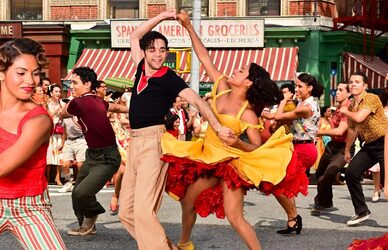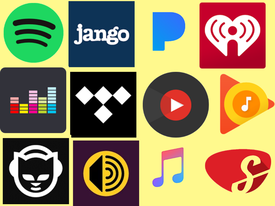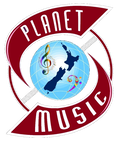 The announcement last year of the impending release of Steven Spielberg’s new movie version of West Side Story was an exceptionally exciting prospect which I keenly anticipated for several months. But, exciting as that prospect has been for me, this brilliantly reimagined movie has not yet realised a break-even financial return at the box-office. As I write this, we don’t yet know if it will make the Oscar nominations, but maybe if it gets an award or two it will surely repeat the success of Cabaret in 1972 when, in New Zealand at least, the original release passed by almost unnoticed until its haul of eight Oscars brought its immediate and hugely successful return to our screens. I saw the new West Side Story at the start of January at Christchurch’s Academy Gold Cinema, one of the very few daytime showings in recent years when I’ve been in a movie theatre that was completely sold out. And, while I loved the movie as a whole, I was initially rather disappointed by the musical impact – or lack of it. The emotional clout of this great score just wasn’t there! A few days later I listened to the music soundtrack at home on my own sound system and the experience was totally different. Everything, as my wife and I both agreed, was so much better. The singing was heartfelt, and the orchestral balance was much more immediate and powerful. What had seemed rather lame in the cinema, came fully to life in my living room. I can only presume that the Academy Gold didn’t have the volume level turned up high enough. A few days later, Joel Coen’s The Tragedy of Macbeth at the Lumière cinema in the Christchurch Arts Centre had all the audio impact one could wish for, which added so much power and atmosphere to that movie. Although the 1961 West Side Story (Best Picture plus 9 other Academy Awards that year) remains a classic, nothing about this new 2021 version is inferior – and much is superior, further demonstrating that Shakespeare’s timeless masterpiece Romeo and Juliet (1595) via West Side Story (1957→1961→2021) remains as topical and relevant as ever. Spielberg’s movie fully communicates the profound humanity of the story – it has the rare quality of compelling our sympathy for every character and enabling us to understand the motivations of every side of the conflict. This is partly the result of setting the production in the reality of Manhattan’s Upper West Side slum clearances on San Juan Hill in the late 1950s, exactly at the time when West Side Story was first staged, and which displaced over 7000 families. Ironically (deliberately?), the world premiere of this new movie screened at Lincoln Centre’s Rose Theatre on the very site of the slum clearances where the movie is set. As I listen again to that stunning new soundtrack, I hear so much more characterisation in every part than ever before; even single lines and phrases from individual ensemble characters are teeming with personality, expression and heart. Officer Krupke is the most obvious example with its wonderfully-conceived improvisatory beginning, but characterisation and individuality are equally to the fore in every ensemble piece from The Jet Song, to America, and from Cool to the ensemble sections of I Feel Pretty. If some of the orchestrations sound a bit homogenous as recorded (where are the all-important guitars in America that Bernstein was so insistent on hearing clearly in his own 1984 recording?), all the instrumental colours and originality of the composer’s and his assistants’ imaginations astonish anew; and the vocal rhythms and textural clarity of the five individual lines in the quintet version of Tonight are simply stunning. As usual with movie musicals (although West Side Story is more than just a musical), much of the musical soundtrack was pre-recorded and used as playback during filming, but I found Ansel Elgort and Rachel Zegler (Tony and Maria) so convincing in their singing of One Hand, One Heart that a bit of research revealed that several songs (One Hand, One Heart; Somewhere; A Boy Like That/I Have a Love; parts of Maria) were indeed sung and recorded live on set during filming. And what a stroke of genius to make the store owner Doc into the Puerto Rican Valentina (played, incidentally, by Rita Moreno, the 1961 film’s Anita) – her performance of Somewhere brought a tear or two, even if, in 1961, she had a ghost voice for A Boy Like That. For this new version, arranger David Newman has retained and respected the 1961 film’s superb original orchestration with a few adaptions and enhancements, all to positive effect. The order of the songs is slightly different from both the original stage score and the 1961 movie – the placements of Cool (here with its chilling undercurrent of commentary on America’s gun culture) and Officer Krupke both make convincing sense in 2021. America retains the Puerto Rican boy vs. girl of the 1961 movie as opposed to the less potent girls-only of the stage musical. And the addition of the Puerto Rican anthem La Borinqueña, sung by the Sharks in the opening sequence, gives them a sense of purpose, personality and validity that balances their status with the Jets in the following Jet Song. The amount of untranslated Spanish in the movie gives the Puerto Rican characters new authenticity, and Tony Kushner’s screenplay brings the original rather stagey dialogue into the twenty-first century. Some of that dialogue restores one or two of the grittier elements of the stage script (“sperm to worm”) that were softened in the 1961 movie. Justin Peck’s choreography is also less stagey than in 1961 – the sizzling spectacles he provides with the help of equally spectacular cinematography in the Jet Song and the Dance at the Gym are exhilarating, and the way America races through the streets instead of being confined to a rooftop (1961) is electrifying! I really need to see this movie again, but I also need to know that the cinema will give it the audio presentation that it deserves.
0 Comments
 The anticipated excitement at seeing in the New Year proved so daunting that we decided to give it a miss in the hope that, even so, the following day would yet prove to be the first day of 2022 – and so it came to pass . . . The day started early because, for me, 1 January 2022 began with the Berlin Philharmonic’s live stream of their 5.00pm New Year’s Eve Concert (5.00am on 1 January NZ time) on the Digital Concert Hall, and ended with the Vienna Philharmonic’s New Year’s Day Concert at 11.15pm NZ time (ending at 1.45am in the morning of 2 January). In between there was a lovely Christchurch summer day, which we made the most of with a walk over the hill, from our house at the bottom, to the top of Huntsbury, overlooking the Rapaki walking tracks on the next hill, and across to the estuary and sparkling Pacific Ocean; then down and home by a different route. Preparing dinner took up much of the afternoon for a lively New Year catch-up with friends in the evening before settling in to watch that keenly anticipated Vienna New Year Concert, where I couldn’t help noticing Christchurch-born violinist Ben Morrison on the second desk of the 1st Violins. Also of interest, at each end of this day, was the observation that the two well-known Ottensamer brothers were the principal clarinets in each of these two New Year concerts: Andreas in Berlin and Daniel in Vienna, where their father had also once been principal clarinet. All of this was ‘live’ – exactly as it was happening in Europe, on the opposite side of the world in the wintery Northern Hemisphere! I couldn’t help thinking that, despite the travel restrictions of the current pandemic, we still have the world at our fingertips and, musically speaking, in such superb sonic and visual immediacy. At the end of the previous edition of Troubleshooter I included a picture of my CD collection; every disc chosen with care after reading reviews, or hearing broadcast performances, or familiarity with the musicians’ previous performances, or recommendations from others. The batches of CDs that I buy always comprise a shortlist, reduced from a significantly longer wish list. The collection has continued to grow from the mid 1980s to early 2020 (not forgetting the hundreds of vinyl records accumulated before that), so that Ursula suddenly wondered if it was time to stop! She pointed out that the capacity of our wall of purpose-built shelving would soon prove finite; not to mention that she’d already begun to fill some of the small remaining spaces with items from her own impressive collection of equally-valued and carefully-and expertly-chosen ceramic pottery. WHAT TO DO? I began to consider getting to grips with network and streaming technology. A visit to my favourite local audio showroom, as soon as lockdown restrictions allowed, quickly offered solutions. A home internet and network streamer connected to my sound system has proved simple and ideal. This particular unit has both hard drive storage and streaming capability, so the occasional download purchase (as opposed to acquiring a physical CD) along with a subscription to a high-quality streaming service (costing roughly the equivalent of one CD per month) has abruptly ended further additions to the CD shelves. The collector’s mentality of owning tangible objects has quickly and comprehensively been replaced by the real motivation (which, all those years ago, had set the whole process in motion) of more easily being able to access the music itself. Now, not only is the whole long ‘wish list’ available, but an extended ‘luxury list’ of albums that I wouldn’t have previously considered for purchase has revealed some rather special discoveries that have already become favourites and, no doubt, contributed towards the artists’ incomes with so many repeated streamed playings. Other advantages, especially with a significant proportion of my CD collection now stored digitally on the new network player, include the ability to select music and feed it to extension speakers in my study simply by means of an app on my phone, without having to go back to the player, select another CD, physically adjust the volume, etc. And creating a playlist of favourite songs from our youth also made quite a special contribution to ‘significant’ birthday events which we hosted at home this year. Returning briefly to my New Year’s Day musical experiences – there’s been some debate on the ‘Save RNZ Concert’ Facebook group about the total absence of the annual Vienna New Year Concert on New Zealand radio and TV, even though the list of countries who take the Austrian live TV broadcast include Tonga, Fiji and other Pacific, African and South American countries. Let’s be clear – these concerts, featuring indisputable masterpieces of Viennese music, played by one of the world’s greatest orchestras and conducted from year-to-year by some of the world’s greatest conductors, are sanctuaries of unaffected artistic potency that help to unify nations, break down borders and blur the boundaries of musical genres that have been constructed and marketed by self-appointed guardians of art and culture. Thankfully, with the ease of access to new technologies, we can now bypass these censors. For me, a year ago, and in audio only, it was BBC Radio 3 streamed via my new network player; this year it was Medici TV, free of charge to all countries whose artistic censorship prevented local coverage, that enabled us to experience the great Daniel Barenboim and the Vienna Philharmonic Orchestra in their full visual and audio glory – a positive and promising start to 2022. |
AuthorTony Ryan has reviewed Christchurch concerts, opera and music theatre productions and many other theatre performances since the mid 1990s. ReviewsTony has presented live and written radio reviews of numerous concerts, opera and other musical events for RNZ Concert for many years. An archive of these reviews can be found at Radio New Zealand - Upbeat
His reviews of opera, music & straight theatre and numerous reviews of buskers and comedy festival performances are available at Theatreview. An archive of Tony’s chamber music reviews is held at Christopher’s Classics He has also reviewed for The Press (Christchurch). Links to Tony's Press reviews are listed below: 2024 Songs for Helen – Music by Chris Adams 2022 A Barber and Bernstein Double Bill – Toi Toi Opera The Strangest of Angels – NZOpera Will King (Baritone) and David Codd (Piano) – Christopher's Classics 2019 Ars Acustica – Free Theatre Truly Madly Baroque – Red Priest The Mousetrap – Lunchbox Theatre Iconoclasts – cLoud Last Night of the Proms – CSO 2018 An Evening with Simon O’Neill NZSO Catch Me If You Can – Blackboard Theatre Brothers in Arms – CSO Fear and Courage – CSO Sin City – CSO Don Giovanni – Narropera at Lansdowne Mad Hatter’s Tea Party – Funatorium Weave – NZTrio Tosca – NZ Opera 2017 Sister Act – Showbiz Broadway to West End – Theatre Royal Chicago – Court Theatre Tchaikovsky Symphony No. 5 – CSO Homage – CSO Last Night of the Proms – CSO SOAR – NZTrio Pianomania – NZSO Rogers & Hammerstein – Showbiz Songs for Nobodies – Ali Harper The Beauty of Baroque – CSO Travels in Italy – NZSO Archives
February 2024
Categories |

 RSS Feed
RSS Feed
